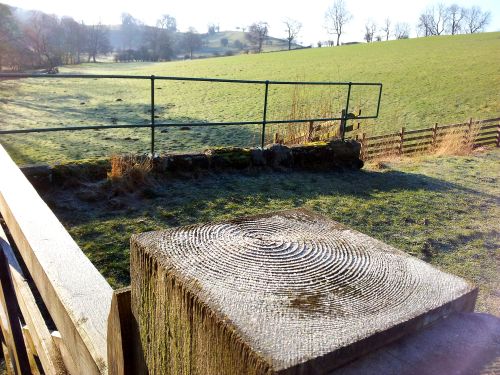Call for Papers (Conference): “Icons of Impermanence: Contemporary Buddhist Art”
Call for Papers (Conference): “Icons of Impermanence: Contemporary Buddhist Art” |
- Call for Papers (Conference): “Icons of Impermanence: Contemporary Buddhist Art”
- (Video) Help finish the documentary film, “When the Iron Bird Flies”
- Winter In The Spring
- Rosanne Cash, “unofficial musician in residence” at the Rubin Museum of Art
| Call for Papers (Conference): “Icons of Impermanence: Contemporary Buddhist Art” Posted: 03 Feb 2012 06:00 PM PST UBC's Meditation and Contemporary Society Program, funded by The Tung Lin Kok Yuen Canada Foundation, will hold a conference on contemporary Buddhist art July 6-8, 2012 at the University of British Columbia's Point Grey campus. Part of event series for Summer 2012 that includes the "Visions of Enlightenment" exhibition (May 10 – September 30), sponsored by the Canadian Society for Asian Arts, at the Museum of Anthropology, UBC. Abstract submission deadline: April 10, 2012 In Meditation, as in other major religions, the visual arts have played a central role. Buddhist artists and artisans created images that inspired by their form and function. As Meditation spread from place to place, it adapted local artistic traditions, creating styles and symbol-sets that not only represented Meditation but, simultaneously, remained in touch with local sensibilities and culture. Portrayals of the Buddha and other important figures in stone, wood, bronze, and ink, for example, continue to anchor local communities, serve as their ritual center, and convey their teachings to new generations. Today, a number of prominent Buddhist styles and symbols are recognized the world over—forming what is called "traditional" Buddhist art. In the face of this broad recognition of the traditional, it is easy to forget that the processes of localization, transformation, and creation are still at work. As demonstrated by Nam Jun Paik's "Buddha" (1989), Mariko Mori's "Enlightenment Capsule" (1998), Xu Bing's "Where Does the Dust Itself Collect?" (2004), or Gonkar Gyatso's "Buddha in Our Time" (2007), contemporary artists draw upon Buddhist iconic, conceptual, and ritual traditions to create works that speak to present day struggles with identity, politics, social practice, and consumer culture. Buddhist artists combine new and old media and display influences from the many kinds of training available in a mobile, globalized world: whether in traditions descended from the European fine arts, apprenticeship in the creation of Buddhist icons, or in the enclaves of the avant-garde. How to submit an abstract: - explore definitions of "contemporary Buddhist art" |
| (Video) Help finish the documentary film, “When the Iron Bird Flies” Posted: 03 Feb 2012 05:00 PM PST When the Iron Bird Flies: Tibetan Buddhism Arrives in the West is a documentary-in-progress, seeking to give the world a comprehensive look at the impact Tibetan Buddhism is having on Western culture. Many teachers and familiar faces — like Richie Davidson (who is featured in our current issue), Dzongsar Khyentse Rinpoche, Reggie Ray, and Tsokyni Rinpoche (who has contributed a piece about emptiness and clarity and perceiving the nature of mind for our next issue) — feature in the film. The people behind the film need your financial help to complete it, so they've started a Kickstarter campaign to raise funds. If you like what you see here (and want to see more) be sure to check out the When the Iron Bird Flies Kickstarter page, which includes more video (including a link to a 20-minute preview) and details on how to kick in. Read More @ Source |
| Posted: 03 Feb 2012 03:00 PM PST  Winter is on it's way here in northern England with snow expected tomorrow. And tomorrow is the first day of Spring in the Solar Calendar! Or at least that's my understanding. Where-ever we are in the big scheme of things there does seem to be a sense of expectancy in the air. What will this new year bring? I wonder. Stay warm. Read More @ Source |
| Rosanne Cash, “unofficial musician in residence” at the Rubin Museum of Art Posted: 03 Feb 2012 10:00 AM PST  Photo by David Shankbone Don't miss the New York Times today for a great piece all about how Rosanne Cash — daughter of the Man in Black, and no doubt a musical legend in her own right — has become a fixture at concerts at New York's Rubin Museum of Art. And while she's not a Buddhist, she has taken inspiration from the Himalayan art at the RMA. Read the Times article here. And for more all about the Rubin, check out our Shambhala Sun profile of the RMA, "Where the Deities Live." Read More @ SourceJesus in Kashmir BBC Documentry This posting includes an audio/video/photo media file: Download Now |
| You are subscribed to email updates from BuddhaRocks ☸ Buddhist To stop receiving these emails, you may unsubscribe now. | Email delivery powered by Google |
| Google Inc., 20 West Kinzie, Chicago IL USA 60610 | |
